Japan art and the last Ukiyo-e knell of the Meiji Era: Western artists inspired by Japan
Lee Jay Walker
Modern Tokyo Times
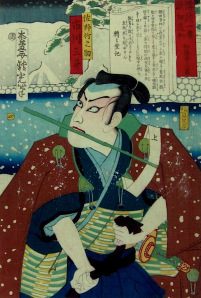
Ukiyo-e art is especially linked with the Edo Period (1603-1868) but while this art form was being forced into the shadows based on the modernizing ramifications of the Meiji Period (1868-1912), the fact remains that you had many amazing Meiji artists. Despite this, many Meiji artists remain overlooked in terms of price mechanisms for the art they produced in this period of time, and in relation to being less famous overall.
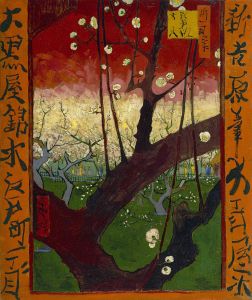
The political ramifications of a new Japan reaching out internationally meant that a plethora of new artistic ideas was impacting on the land of the rising sun. Indeed, political elites during the Meiji Period desired not only to follow the modernization processes of powerful Western nations but, in terms of culture, Japan also desired to reach out. Hence, the old world of ukiyo-e seemed like a distant past that was soon to be replaced by new artistic ideas emanating from Europe and North America.
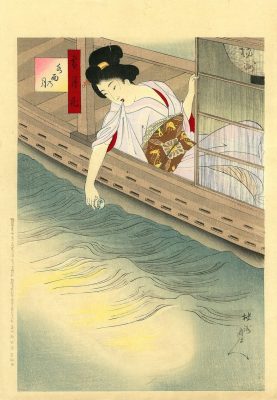
However, culture is never a one-way traffic because many Impressionist artists adored Japanese art. In other words, the gradual loosening before the demise of the Edo Period meant that European and North American art lovers knew so much more about ukiyo-e. Ultimately, this would bless Impressionists thereby the early Meiji Period would witness artistic ideas going in both directions between Japan and the Western world.
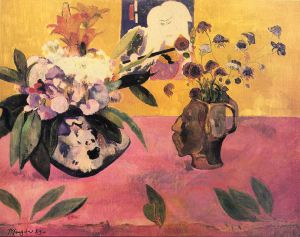
Notable Western artists who adored Japanese art include Pierre Bonnard, Mary Cassatt, Edgar Degas, Paul Gauguin, Toulouse-Lautrec, Claude Monet, Camille Pissarro, Pierre-Auguste Renoir, James Abbot McNeill Whistler, and Vincent Van Gogh. Hence, fusions of ideas were impacting in both directions even if Japanese artists were often sent to Europe and North America – rather than Western artists moving to Japan. Equally important, the Impressionist heyday meant that the influence of Japanese art would wane in time. However, Japanese artists would continue to be influenced by major centers of art, notably Paris during the Meiji Period and continuing for several decades after this period.
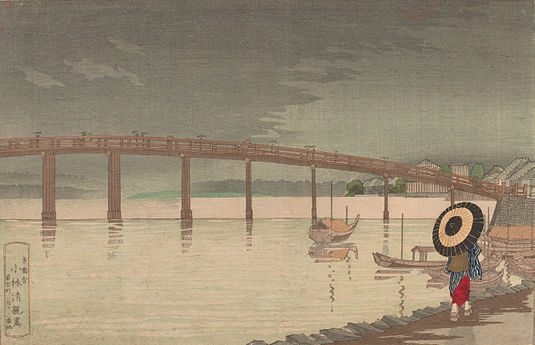
The art piece titled Bridge in the Rain by Van Gogh (below) highlights the influence of Hiroshige on the mindset of this esteemed European artist. Therefore, Van Gogh is replicating aspects of the original by Hiroshige, while maintaining his own natural traits. Of course, subtle differences abound, for example, Van Gogh uses a different color scheme, embeds the power of nature, and other important areas including texture. Despite this, it is abundantly clear that Van Gogh is paying deep respect towards Hiroshige.
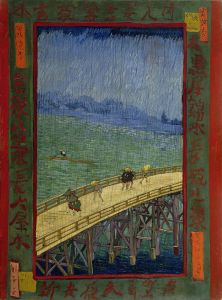
In respect to Toulouse-Lautrec, Dieter Wanczura (www.artelino.com) says, “Japanese printmaking had a very pervasive influence on his style. For Toulouse-Lautrec movement and forms were important. His compositions, unusual perspectives and the use of large areas of flat color are undoubtedly inspired by Japanese woodblock prints.”

Turning back to Meiji artists in Japan that appear to be undervalued in comparison to Edo artists, then this seems somewhat unfair. After all, many fine ukiyo-e artists maintained the spirit of the past while adding to new themes based on the changing nature of society and technology. These Meiji artists include Ginko Adachi, Chikanobu, Kobayashi Kiyochika, Toyohara Kunichika, Kawanabe Kyosai, Mizuno Toshikata, Utagawa Yoshifuji, Yoshitoshi, and several others.

Of course, in time all art forms and periods of history fade to various degrees. Hence, some shadows remain longer while others fade gradually or rapidly. Equally, the continuing influence of these various art forms varies enormously. However, ironically, in Japan, the world of Impressionism and ukiyo-e of the Edo Period remains an enormous pull for art lovers who visit museums, for people who buy art prints, and who buy books and so forth. Yet, sadly, Meiji artists still seem undervalued despite playing an important role in the later stages of the nineteenth century and the early period of the twentieth century before the knell of this art form.

Modern Tokyo News is part of the Modern Tokyo Times group
DONATIONS to SUPPORT MODERN TOKYO TIMES – please pay PayPal and DONATE to sawakoart@gmail.com
http://moderntokyotimes.com Modern Tokyo Times – International News and Japan News
http://sawakoart.com – Sawako Utsumi personal website and Modern Tokyo Times artist
https://moderntokyonews.com Modern Tokyo News – Tokyo News and International News
http://global-security-news.com Global Security News – Geopolitics and Terrorism
PLEASE JOIN ON TWITTER
https://twitter.com/MTT_News Modern Tokyo Times
PLEASE JOIN ON FACEBOOK